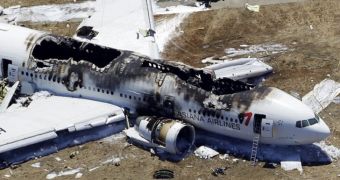Officials have released several 911 calls made after the Asiana plane crash at the San Francisco International Airport.
The callers alerted authorities of the fact that they had been waiting for twenty minutes for help. They mention people with severe burns and many other injured. A caller talks about a woman dying.
"We've been down on the ground, I don't know, 20 minutes, a half-hour. [...] There are people waiting on the tarmac with critical injuries. We're almost losing a woman here. We're trying to keep her alive," an unidentified woman says.
The release of the tapes sparks debates on airline staff response training and the time it has taken emergency services to arrive after the crash.
As we detailed earlier, Deborah Hersman, chairwoman of the National Transportation Safety Board, stressed that the doors and slides did not open right away and the passengers were forced to stay inside the plane for more than 90 seconds.
"Hindsight is 20/20. [...] We need to understand what they were thinking, what their procedures are, whether they complied with these, whether that evacuation proceeded in a timely manner.
"I hope all the families who have suffered losses from this accident to recover as quickly as possible and they're in my prayers," she said in a press conference.
According to ABC News, a second passenger described seeing too few ambulances for the number of wounded people on the plane.
"We just crashed-landed on the airline and it looks like help's coming, but not too many ambulances," the caller says.
Kees Rietsema, dean at Embry-Riddle Aeronautical University, claims that the flight instructor should have handled the situation better, as the pilot had limited experience on the Boeing 777.
"Obviously the captain is responsible, and in this case it's the instructor in the right seat who is responsible," he explains.

 14 DAY TRIAL //
14 DAY TRIAL // 